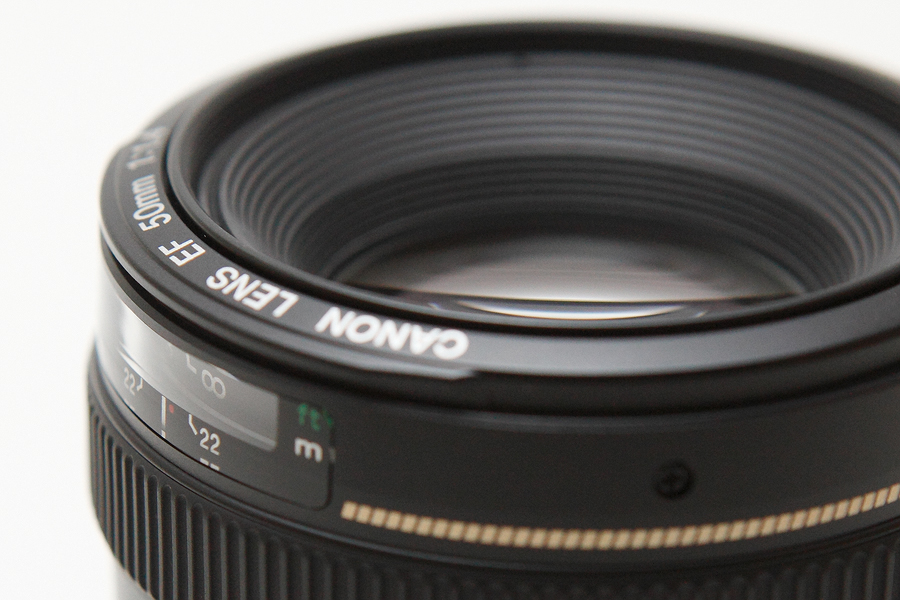I wanted to take a quick break from the adorable dogs and cats that normally fill up this space to talk about another aspect of photography that I’m passionate about: gear! And, more importantly, how that gear relates to taking photos of…the adorable dogs and cats that normally fill up this space!
With photography, the word “gear” can mean so much: camera bodies, lenses, filters, lighting equipment, tripods, memory cards, camera bags, slings, battery grips, underwater housings…the list goes on and on! And any one piece can be just as important to capturing that priceless image as the next.
Today, though, I wanted to focus (pardon the pun) on lenses. And not just any lens! This lens, the EF Canon 50mm f/1.4 USM, will always have a special place in my heart. It was the first lens I purchased after deciding to pursue pet photography professionally, and the first lens I owned to have the all-important — especially when working with pets — “Ultrasonic” (USM) focusing motor. (Wow, what a difference that made!)
With a weight of 10.2 ounces and a price of around $350.00, the Canon EF 50mm f/1.4 is chock full of contradictions. It’s an affordable, compact image quality machine, capable of producing images that rival those captured via lenses that weigh three times as much, and at a fraction of the price. As I mentioned, it has an Ultrasonic focusing motor that is quiet and accurate, and a metal lens mount that adds some sturdiness to an otherwise plastic barrel construction.

Canon 50mm f/1.4: “Phenomenal cosmic power!…Itty-bitty living space.”
Prior to the Canon 50mm f/1.4, I had been using another nifty little lens as a hobbyist to open up a world of creative possibilities: the EF Canon 50mm f/1.8 II (also known as the “Plastic Fantastic” and the “Nifty Fifty”). At first glance, there isn’t much difference between the two lenses — they’re both 50mm primes, with only 2/3s of an f-stop to separate their maximum aperture values. But the practicable differences make these two lenses worlds apart. Chief among them, the focusing motors. As a professional, I need to be confident in my equipment’s ability to perform at a professional level. And it was very apparent that while the 50mm f/1.8 II was capable of producing images of good sharpness, it could not be counted on to focus on fast moving subjects or in low light.
The 50mm f/1.4 has several other advantages over its smaller, cheaper sibling, as well: it has an eight blade aperture, as opposed to the five blade aperture of the 50mm f/1.8 II, which allows it to render out-of-focus elements with a smoother, more pleasing appearance. It also has a full-time manual (FTM) focusing ring, whereas the 50mm f/1.8 II has a focusing ring that rotates with auto focus on the front of the lens barrel, which can be easily broken.

The 50mm f/1.4’s plastic lens barrel keeps cost — and weight — down.
With a maximum aperture of 1.4, the 50mm f/1.4 allows for fantastic background separation, which has always been a style to which I’ve been drawn. At wider aperture settings the lens is prone to chromatic aberration and can produce a “dreamy” softness; these effects seem to be well controlled by f/2.0, however. The AF, while snappy, is not without its limitations as well — it is a poor choice for fast-moving action, like running, though when stopped down on a body with reliable Servo focusing I think the lens would be just fine for a steady walking speed.

Many of my favorite captures have been taken with the Canon EF 50mm f/1.4 USM.
The 50mm focal length, especially on full frame cameras, has long been one of my favorites — it feels very natural and is flexible enough for a variety of shooting environments, from indoors to out. The Canon EF 50mm f/1.4 USM is a lens that pairs that flexibility with reliable autofocus, outstanding subject isolation, and very good image quality for a fair price. Though it may not have the “best” bokeh or the fastest subject tracking capability, this is a workhorse lens that, for the weight and size, you could feel fine bringing just about anywhere.



5 comments